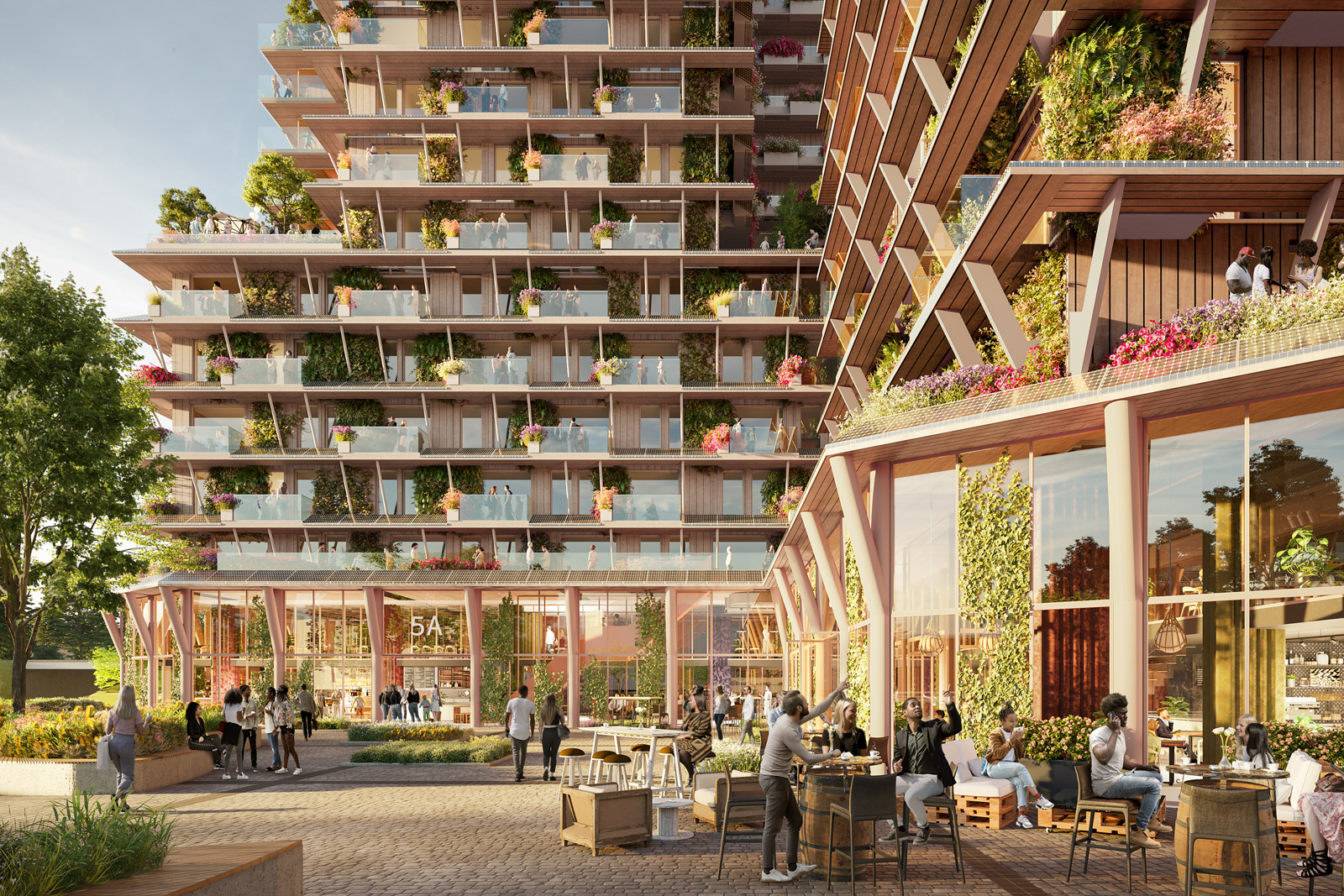This affordable housing project strengthens the bond between a rich diversity of residents and its neighbourhood. On green terraces, gardens and galleries people can meet and mingle.
From a designer’s perspective, it is sad that the debate on urban living is dominated by political and financial arguments. While the future of the city should be at least as vociferous about the quality of its spaces and social aspects. We believe the city should be accessible to all and, like all those other architects who share the same opinion, is looking for leeway to make that happen.
But how do you design a building that strengthens the bond between a rich diversity of residents and the neighbourhood in an informal and creative way? We want to introduce a design here mutual respect is encouraged and improvisation and spontaneity is celebrated. Barrio Lobi represents a neighbourhood that everyone values, connects with, and loves. It is a story about a wheelbarrow full of desires, demands and regulations and how to turn that content into cultural and social meaning.
Barrio Lobi, for which we designed two residential buildings, with abundant outdoor spaces designed in wood with ample planting and solar panels. The horizontal lining depicts the space for social connections. Here neighbours can meet and greet each other. The eaves that generate sun shading allows for large window openings and low energy usage. Through workshops and design sessions, local entrepreneurs and residents have been closely involved in the planning process. From the start they have been advising on neighbourhood-specific housing and living rituals strengthening the social potential of this design.
The plan consists of a mix of dwellings in various categories such as medium-rated-rental apartments, medium-priced selling apartments and free-sector selling apartments. Like the diversity of the location, each individual plot is designed by a different architect which gives each block its own character. Unity is created by a public space design with connections and places where neighbours can meet, and children play together. The buildings are climate-adaptive, energy-efficient and built with circular materials.

